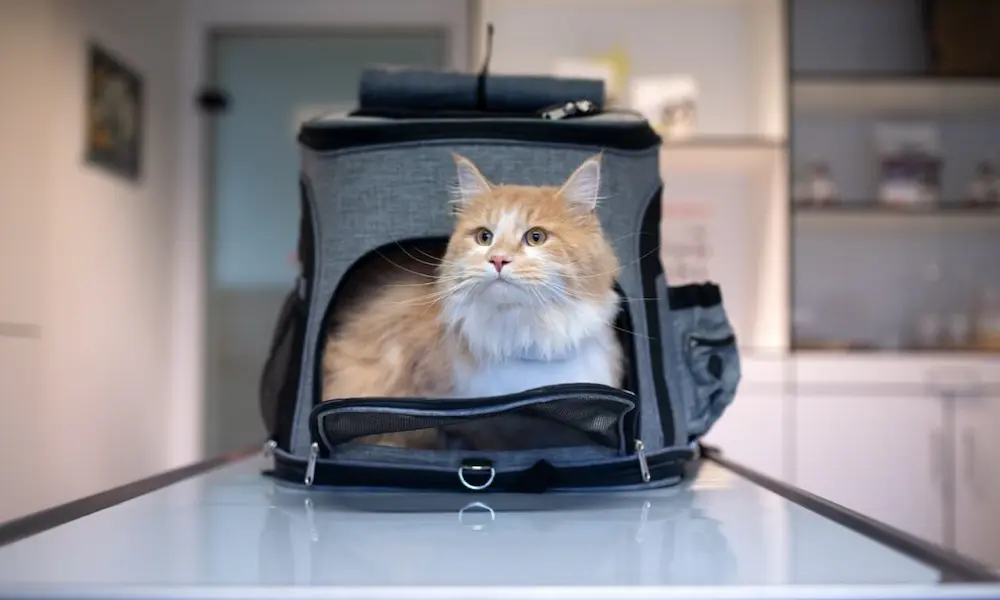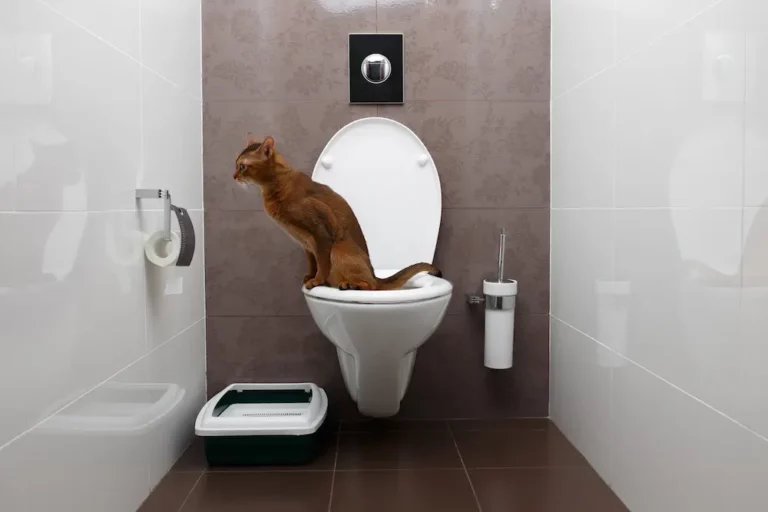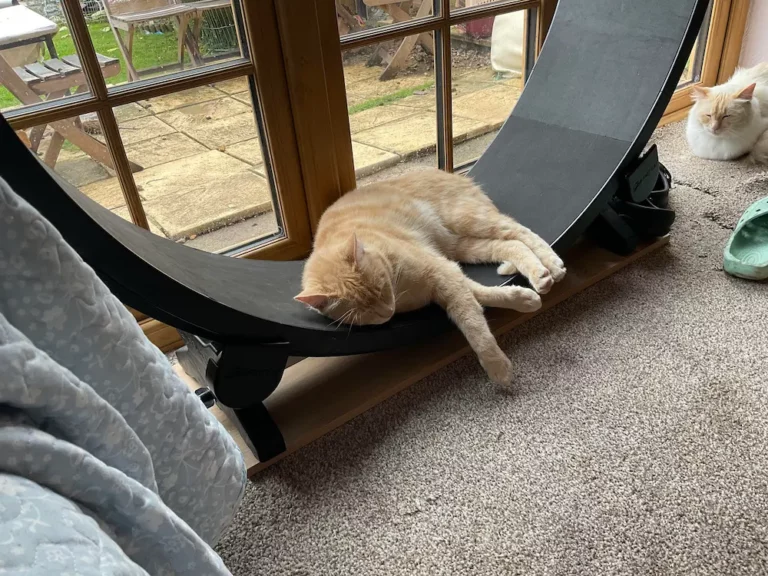Should you Keep A Cat Inside The Carrier: How Long is Too long?
Ever found yourself wondering how long it’s okay to keep your
Whether it’s a trip to the vet or a longer journey, we’ve all been there.
The answer isn’t as straightforward as you might think, as it involves more than just time—it’s about ensuring your
That said, knowing how to properly use a carrier can be a game-changer, especially in emergencies or while traveling.
In this guide, I’ll jump into the essentials of using a carrier for your
Let’s dive in.
What Is A Cat Carrier?
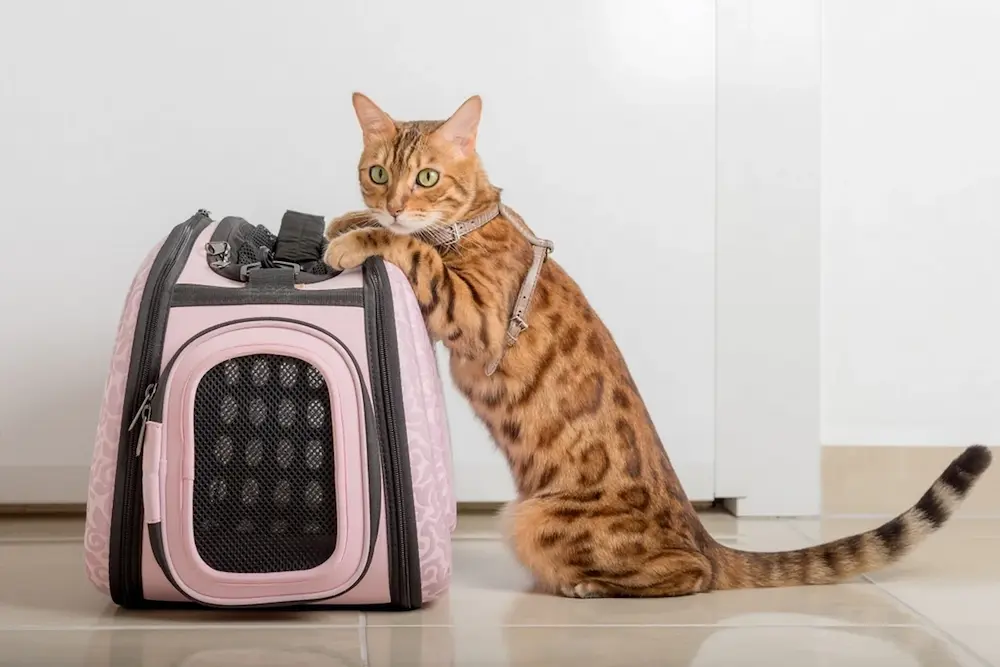
A
These carriers come in various sizes, materials, and designs, catering to the diverse needs and preferences of
So, a carrier serves a key role in ensuring a
When Should You Use It For Your Cat ?
I’ve found that there are several occasions when having a
Let’s investigate them closer:
- Vet Visits: Probably the most common reason I’ve had to use a
cat carrier is for those inevitable trips to the vet. It keeps mycat safe during the journey and in the waiting room, reducing stress for both of us. - Moving: When I moved homes, my
cat carrier was invaluable. It provided a secure sanctuary for mycat amidst the chaos of boxes and movers, making the transition smoother and less frightening. - Travel: Whether it’s a short trip to a friend’s house or traveling with your cat long distance, a
cat carrier ensures yourcat can come along for the ride safely. It’s crucial for travel, as it prevents cats from roaming around the vehicle, which could be dangerous. - Emergencies: In case of an emergency, such as a natural disaster or an unexpected trip to the vet, having a
cat carrier ready can be a lifesaver. It’s one of those items I hope not to need but am always thankful to have at hand.
How Long Can Cats Stay Inside The Carrier?
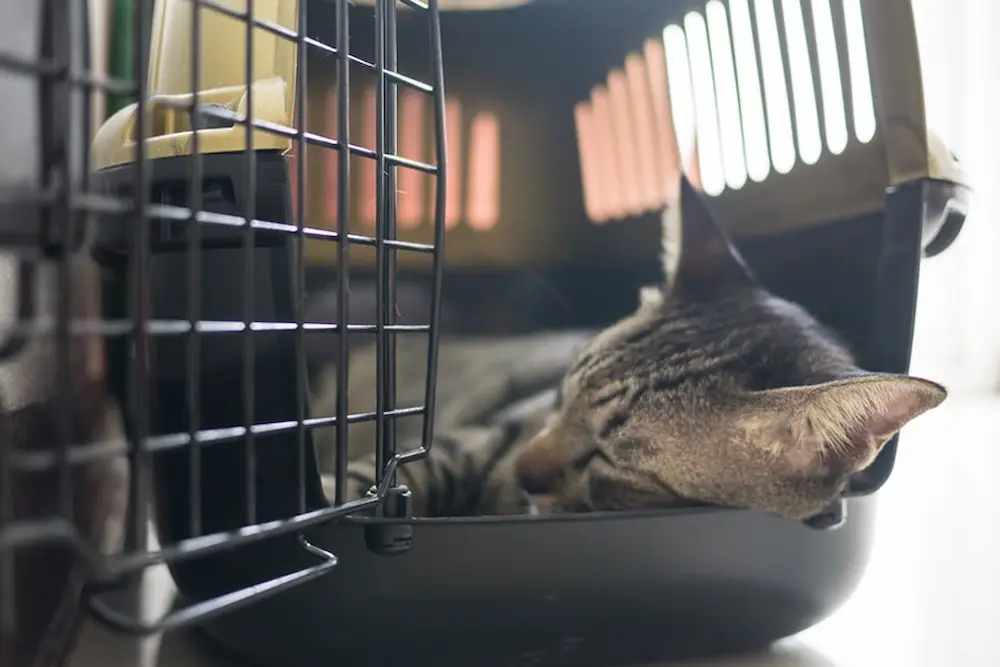
When we talk about transporting our felines, the comfort and safety of the
That’s why understanding the limits of how long a
Let’s discuss into why it’s important not to overdo their time in a confined space.
Reasons Why Cats Shouldn’t Spend Too Much Time In The Carrier
When it comes to spending time in the carrier, it’s not ideal for cats to be inside for longer periods.
While carriers are essential when traveling or taking your
So, why shouldn’t your feline be inside for too long?
Here’s a list of reasons why cats shouldn’t spend too much time in the carrier.
Moving Around
Firstly, cats need space to move. Much like us, they need to stretch their limbs and move around.
Imagine being stuck in a cramped space for hours. Not comfortable, right?
Prolonged confinement can lead to discomfort and stress for your kitty. For a temporary period, a carrier is fine, but it’s not a long-term living space.
Stress & Anxiety
Stress and anxiety play a big role here as well.
Being in a confined space for too long can make a
It’s vital to monitor your
From my own experience, I’ve noticed how jittery my
Hygiene
Hygiene becomes another concern if a
Even with absorbent pads or blankets, the small space of a carrier doesn’t allow for proper sanitation.
It’s essential to make regular breaks to maintain cleanliness, ensuring your
Food & Water
Accessibility to food and water is another critical factor.
While it’s possible to place small food and water dishes in some larger carriers, it’s generally not feasible for short trips.
That said, if you’re planning a longer journey, choosing a carrier that can accommodate these necessities becomes crucial.
It’s all about balance: ensuring your
Things To Consider When Purchasing A Cat Carrier
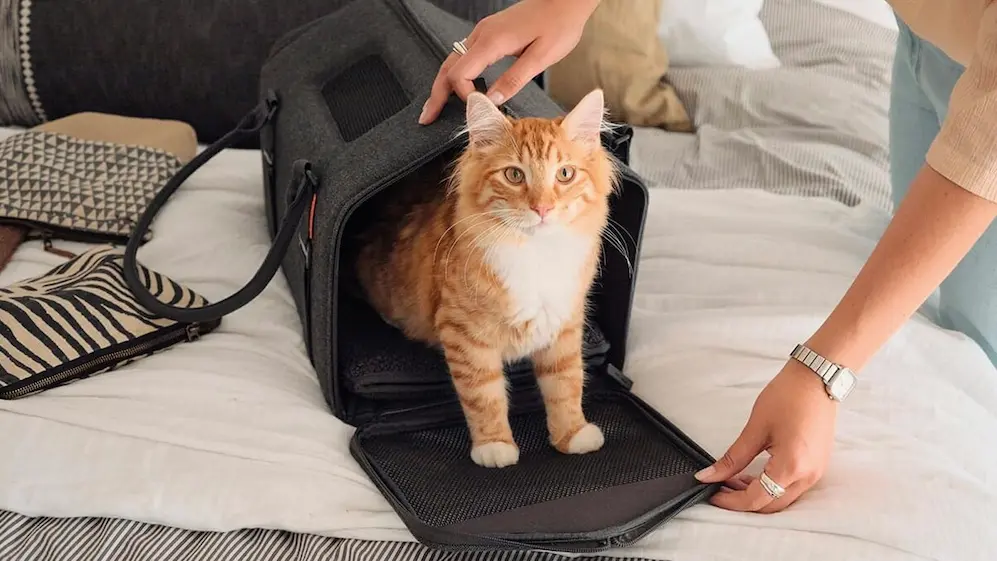
When it comes to ensuring your
Having journeyed with my felines on numerous trips, I’ve gathered some insights that might help you make a well-informed choice.
Size
First off, size matters.
A carrier should be spacious enough for your
But, too large a carrier can make your pet feel insecure. Imagine being in an oversized room with no cozy corners; it’s unsettling.
Hence, aim for a snug fit—not too tight, not too loose.
Material
Material is another critical factor.
Cardboard carriers are a no-go for long-term use.
They might work for a quick vet visit, but they’re hardly durable or secure. Your
Soft-sided carriers offer flexibility and are less bulky, but they need to be sturdy.
Make sure the one you choose can withstand your
Ventilation
Ventilation is paramount. I can’t stress this enough.
A well-ventilated carrier ensures your
Look for carriers with ample mesh panels that allow for airflow yet are resistant to sharp claws.
Accessibility
Accessibility is another key aspect.
Multiple openings can be a lifesaver, especially if your
Having the option to load your pet from the top or side can make a world of difference. It’s akin to using a door instead of a window to enter a room—far less stressful for both of you.
Security Features
Security features must not be overlooked. Strong zippers, secure latches, and a sturdy base are essential.
These features prevent escape and ensure the carrier stays intact during travel.
Also, consider a carrier with a strap or handle that secures your car’s seatbelt.
It’s like having a safety net; it provides an extra layer of protection.
Helping Your Cat Adapting To Using A Carrier
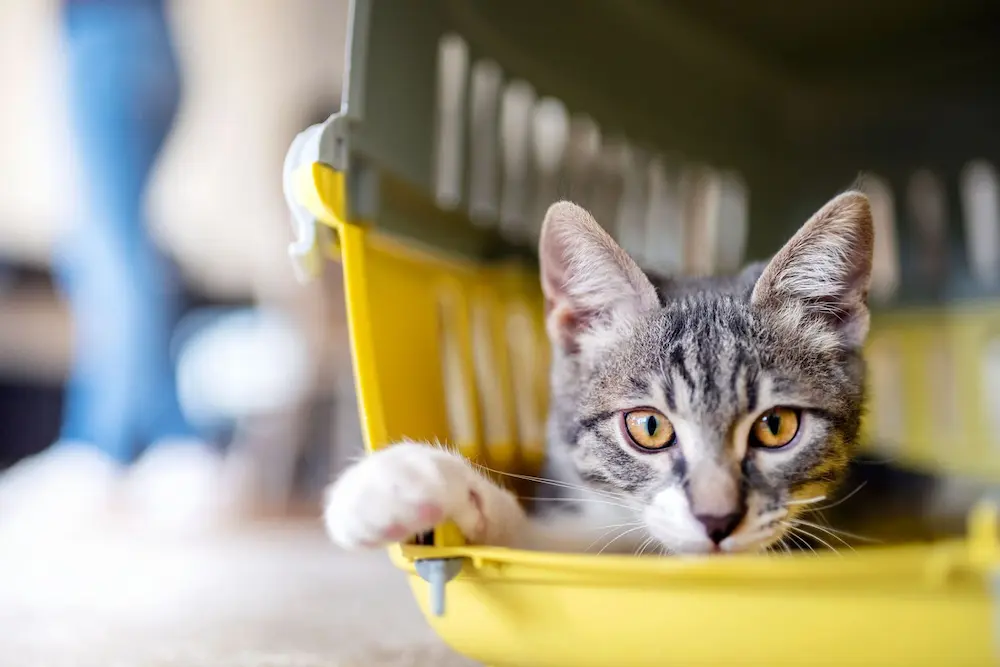
When it comes to traveling or visiting the vet, getting your
As someone who’s been through the wringer with fussy felines and finicky carriers, I’ve gathered a treasure trove of insights.
Let’s jump into what you can do to make the carrier less of a foe and more of a friend to your
Training Your Cat To Use The Carrier
The key to success lies in patience and positive associations.
Don’t wait until the day before your trip to introduce your
Think of the carrier as a new piece of furniture for your
Leave it open in a favorite spot, allowing curiosity to take its course.
I tend to keep the carrier out and accessible in my home, allowing my
Cats love to explore, and an open carrier can become a new secret hideout.
To sweeten the deal, place comfortable bedding inside, sprinkle it with catnip, or leave a trail of treats leading into it.
The goal is to make the carrier an inviting place.
I’ve found that routine brief stays inside the carrier, followed by rewards, can significantly ease anxiety.
Make it a game or part of your daily playtime.
Slowly extend the time your
Getting Your Cat In The Carrier During An Emergency
But, what happens in an emergency situation?
Preparation and knowledge are your best allies when time is of the essence and your
Familiarity breeds content, so if your
But, during emergencies, even the most docile
Here’s where a blanket or towel becomes your best friend – a gentle wrap not only calms but also prevents scratches.
Place your wrapped feline gently into the carrier.
I’ve found that approaching the carrier from above makes this process smoother, as cats often resist less when gently lowered in.
Besides, always keep the carrier in an accessible location. You don’t want to be rummaging through the closet when time is ticking.
Having an emergency pet kit nearby is equally crucial.
This can include treats, a small water dish, and maybe even a pheromone spray to help calm your
And remember, practice makes perfect.
You might not get it right the first few times, but consistency is key.
Anticipating your
FAQ – Frequently Asked Questions
What Should You Do If A Cat Won’t Enter The Carrier?
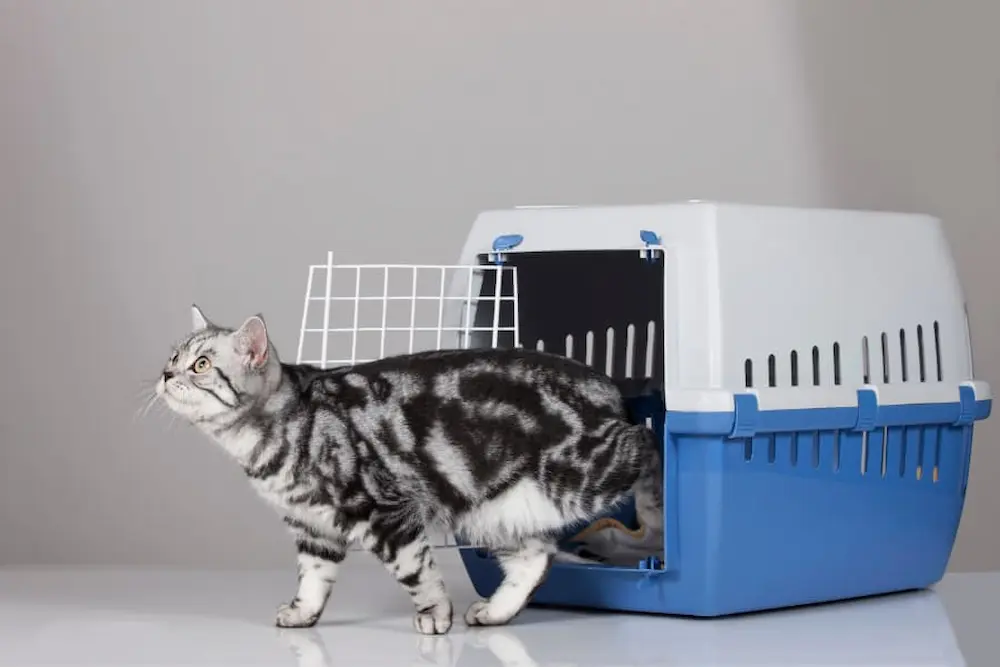
Facing resistance when trying to introduce a
But, armed with patience and the right strategies, convincing your
Firstly don’t wait until the day of the vet appointment to introduce the carrier.
The sooner you introduce it, the better.
Make it inviting.
Use items that carry your
The familiarity of these items can greatly reduce their anxiety.
Pheromone sprays can also be incredibly effective as they mimic the calming scents cats naturally produce.
A few spritzes inside the carrier can make a world of difference.
Training and positive reinforcement are your best friends in this scenario.
Whenever your
Should they venture inside, my recommendation is to double down on the positive reinforcement.
Over time, they’ll start associating the carrier with positive experiences.
You can also mimic the process of going on a trip and carrying your
This can help desensitize them to the motion and sounds associated with travel, making the carrier—and the journey—a lot less daunting.
In cases where your
Cats often feel safer in dark, enclosed spaces, which can significantly reduce their resistance to entering the carrier.
Should You Leave A Cat Inside A Carrier Overnight?
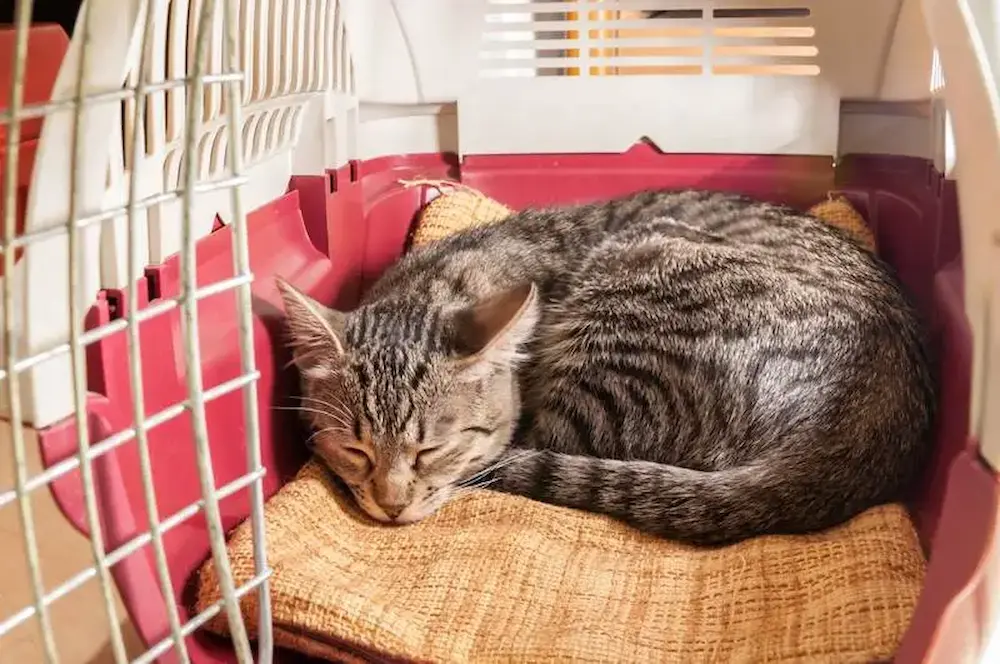
I’ve often encountered the question of whether it’s safe or humane to leave a
The short answer is – it depends. But, let me dive deeper into what factors come into play.
Cats are creatures of comfort and routine; they appreciate having their space.
Hence, confining them to a small space for an extended period can be stressful and uncomfortable.
A
But, most standard carriers are a bit of a squeeze for these activities.
If you’re considering overnight confinement, looking into a larger, more spacious carrier is wise.
Think about it like this: Imagine spending hours in a cramped airplane seat.
Now, imagine if that was your only option to stretch, sleep, or even turn around. Not the most comfortable situation, right?
It’s essential to mention that cats have clean habits; not providing access to cat litter for an extended period can cause distress and potentially lead to health issues.
There are portable litter solutions that might fit in larger carriers, but space and cleanliness quickly become concerns.
Overall, while short stays in a carrier are sometimes necessary, overnight stays should be avoided if possible.
If an overnight stay in a carrier is unavoidable, maximize comfort and safety to minimize stress for your feline.
Can Your Cat Spend Extended Periods Of Time In A Carrier?
While short durations in a carrier are sometimes necessary, it’s best to avoid long stays, especially overnight.
If you find yourself in a situation where it’s unavoidable, remember to make the carrier as cozy and inviting as possible.
Adding soft bedding, items with familiar scents, and preparing your
Always prioritize your
